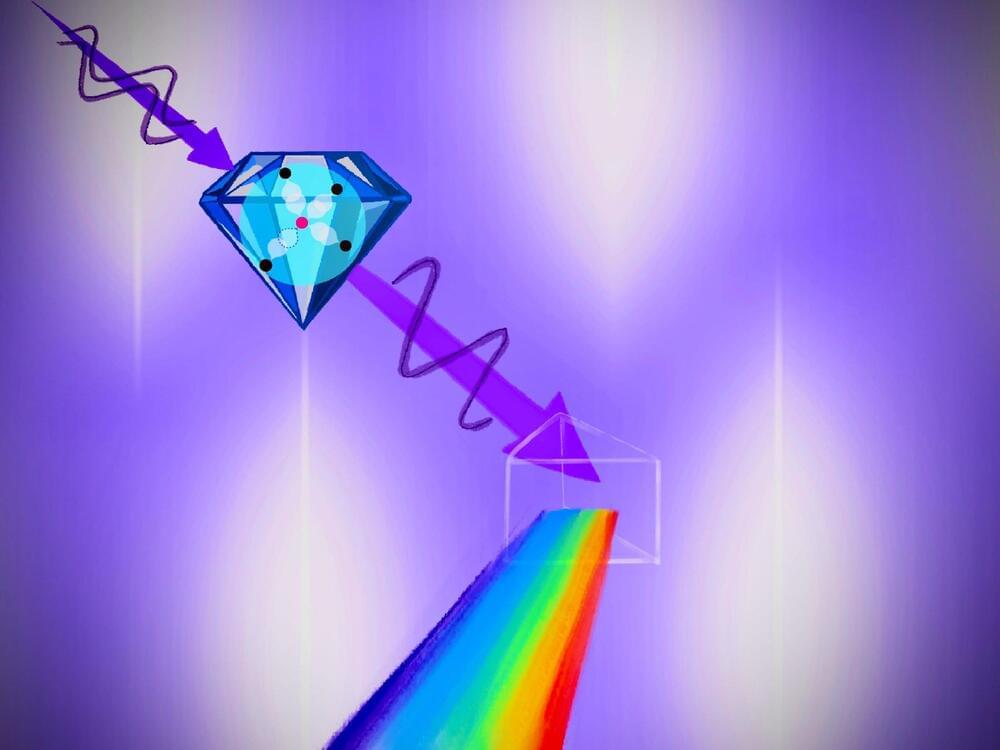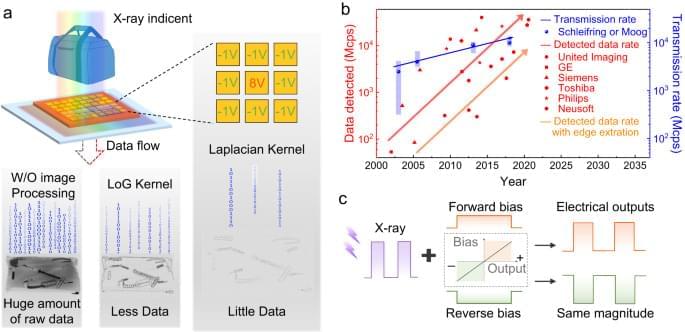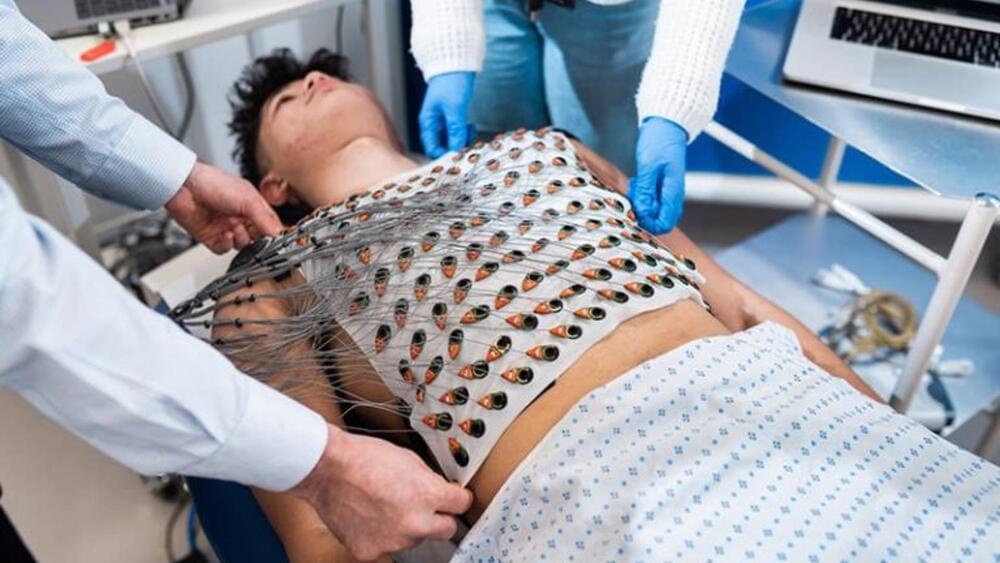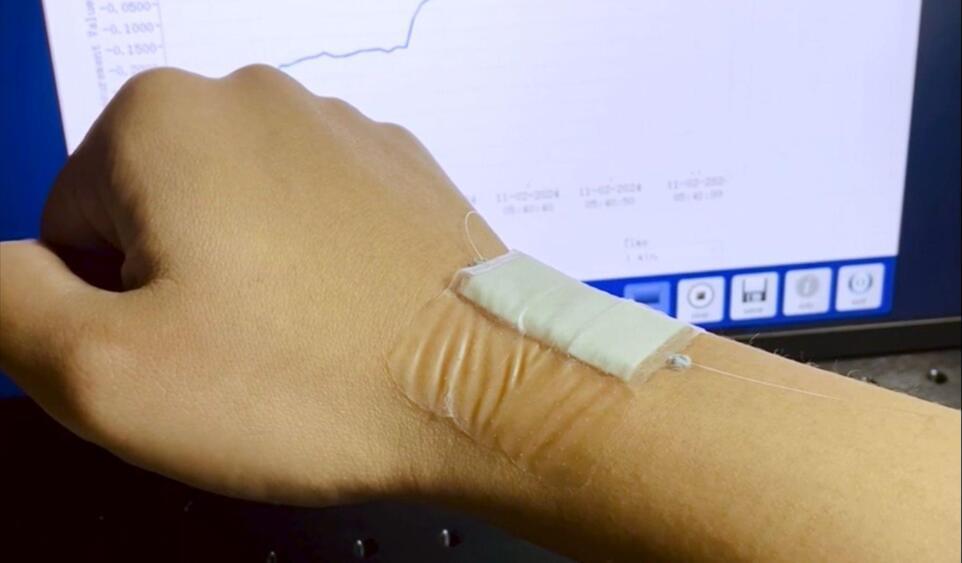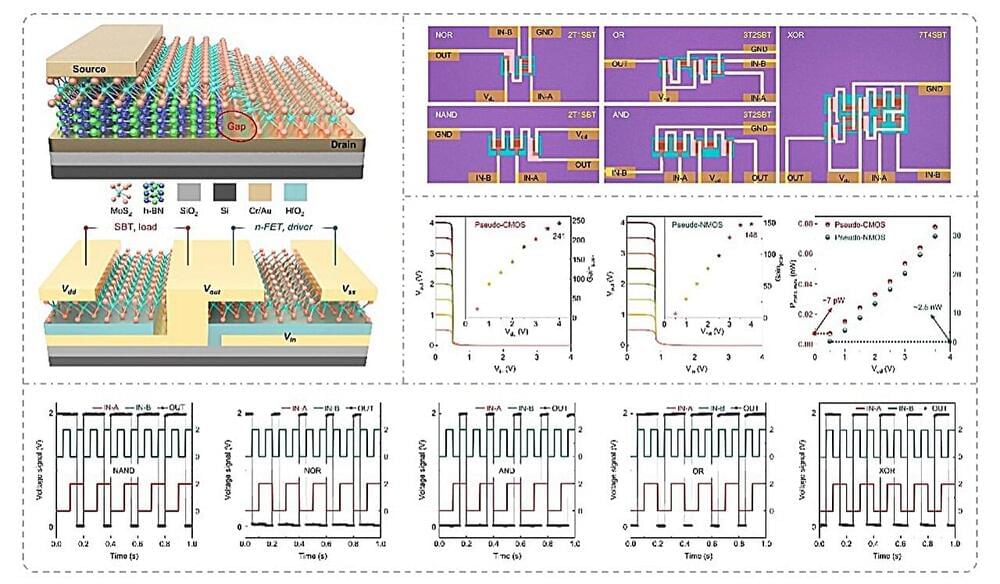Archive for the ‘electronics’ category: Page 10
Mar 2, 2024
Unlocking the Quantum Secrets Hidden in Diamonds for Advanced Electronics
Posted by Saúl Morales Rodriguéz in categories: electronics, quantum physics
Highly precise optical absorption spectra of diamond reveal ultra-fine splitting.
Besides being “a girl’s best friend,” diamonds have broad industrial applications, such as in solid-state electronics. New technologies aim to produce high-purity synthetic crystals that become excellent semiconductors when doped with impurities as electron donors or acceptors of other elements.
The Science of Doping.
Mar 2, 2024
Reconfigurable perovskite X-ray detector for intelligent imaging
Posted by Dan Breeden in categories: computing, electronics
In-sensor computing requires detectors with polarity reconfigurability and linear responsivity. Pang et al. report a CsPbBr3 perovskite single crystal X-ray detector for edge extraction imaging with a data compression ratio of 46.4% and classification task with an accuracy of 100%.
Mar 1, 2024
Vest with 256 sensors to detect early signs of heart muscle disease
Posted by Shubham Ghosh Roy in categories: biotech/medical, electronics
The researchers from UCL created a reusable vest to diagnose hypertrophic cardiomyopathy–an inherited heart muscle condition.
Feb 29, 2024
Report: Samsung Throttles NAND Production by 50%
Posted by Shailesh Prasad in categories: computing, electronics
Feb 28, 2024
A wearable sticker turns slight movements into communication
Posted by Gemechu Taye in categories: electronics, wearables
The soft and flexible wearable sticker sensor can be worn for long hours and even picks slight movements that conventional sensors miss.
Feb 27, 2024
Single-pixel p-graded-n junction spectrometers
Posted by Dan Breeden in category: electronics
The miniaturization of spectrometers to a submillimeter-scale footprint opens opportunities for applications in hyperspectral imaging and lab-on-a-chip systems. Here, the authors report a high-performance single-pixel photodetector spectrometer based on the III-V semiconductor p-graded-n junction, featuring a voltage-tunable optical response.
Feb 24, 2024
FRAUDULENT Scientific Study EPIDEMIC Destroying Credibility of Medical Research: Report
Posted by Dan Breeden in categories: biotech/medical, electronics

Briahna Joy Gray and Robby Soave discuss a new report on credibility in academic papers. #science #research.
About Rising:
Rising is a weekday morning show with bipartisan hosts that breaks the mold of morning TV by taking viewers inside the halls of Washington power like never before. The show leans into the day’s political cycle with cutting edge analysis from DC insiders who can predict what is going to happen. It also sets the day’s political agenda by breaking exclusive news with a team of scoop-driven reporters and demanding answers during interviews with the country’s most important political newsmakers.
Feb 22, 2024
A New Sensor for Rapid, Simple Skin Cancer Detection
Posted by Shubham Ghosh Roy in categories: biotech/medical, electronics

A new tool has been developed to detect skin cancer; it utilizes a biosensor that can identify small changes in the characteristics of cells. | Clinical And Molecular Dx.
Feb 20, 2024
An architecture for sub-picowatt logic computing based on self-biased molybdenum disulfide transistors
Posted by Jose Ruben Rodriguez Fuentes in categories: computing, electronics
The continuous improvement of circuits and electronic components is vital for the development of new technologies with enhanced capabilities and unique characteristics. In recent years, most electronics engineers have been specifically focusing on reducing the size of transistors, while retaining a low power consumption.
Researchers at University of Science and Technology Beijing recently introduced a new pseudo-CMOS architecture based on self-biased molybdenum disulfide transistors. This architecture, outlined in Nature Electronics, could be used to create highly performing inverters, gate circuits, and other device components.
“The development of integrated circuits (ICs) for efficient computing with low power is a global hot topic and a focus of international competition in cutting-edge fields,” Zheng Zhang, co-author of the paper, told Tech Xplore.

